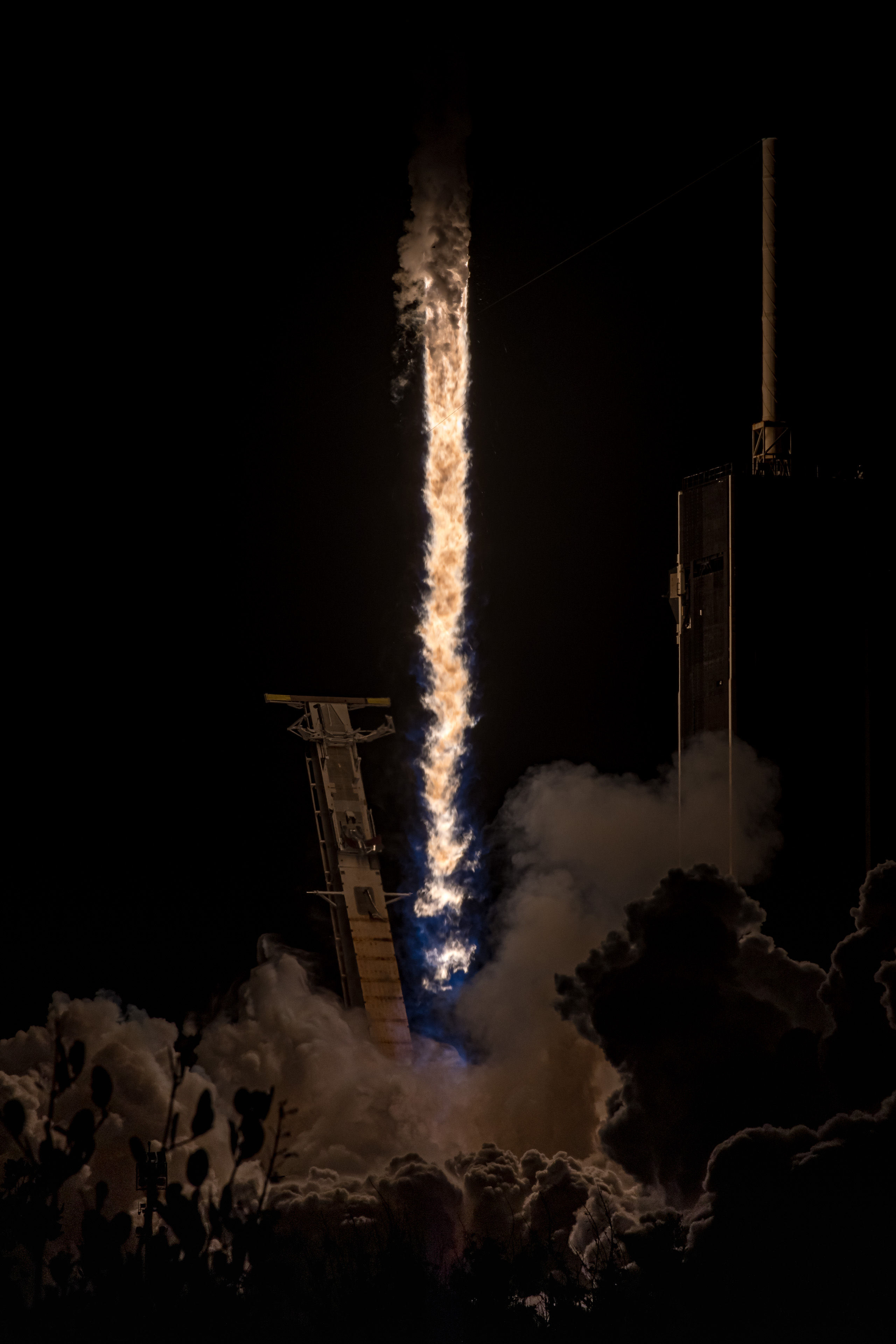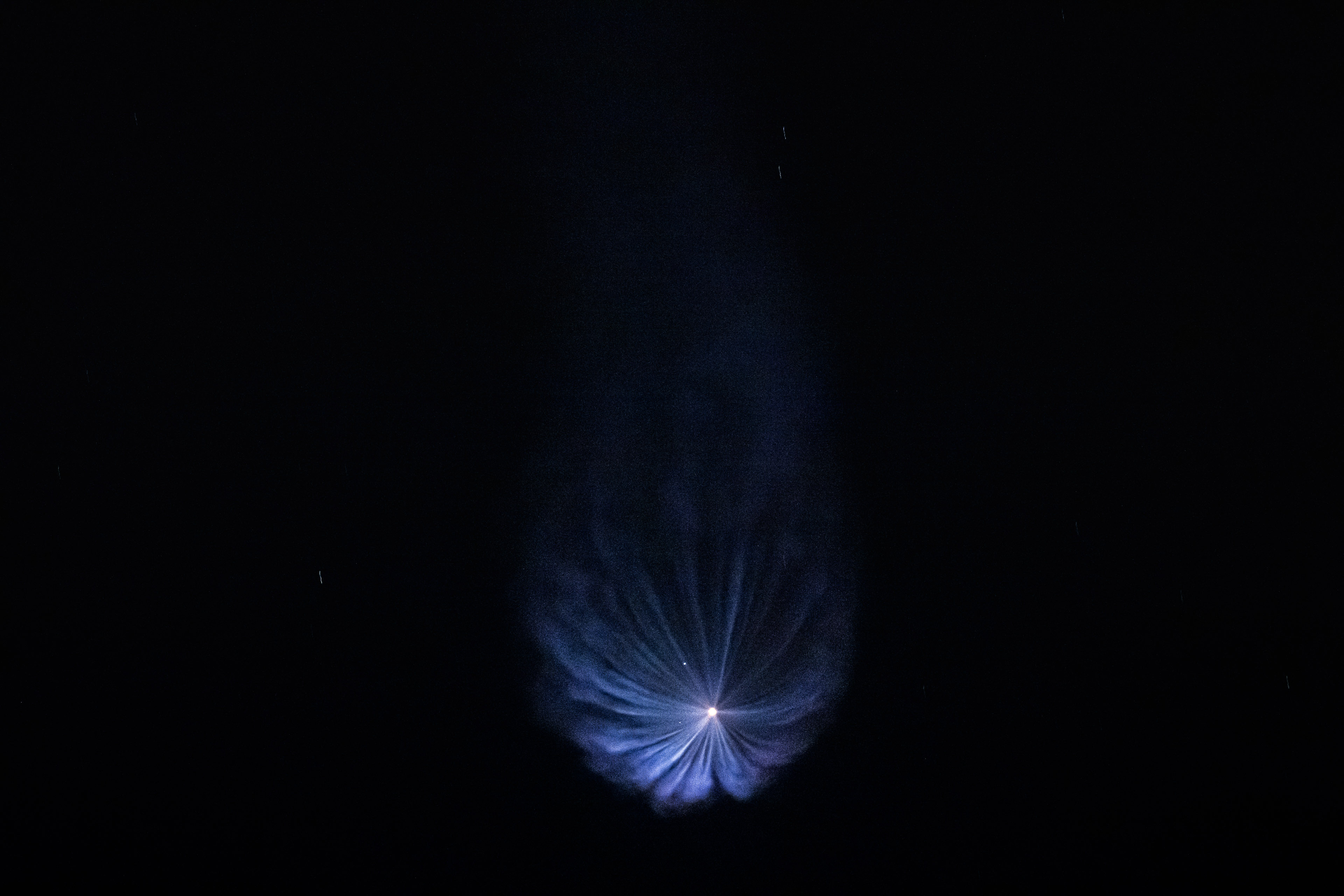SpaceX's 200th Falcon 9 rocket launch looks absolutely gorgeous in these photos

SpaceX's Falcon 9 rocket notched its 200th successful orbital mission on Thursday (Feb. 2), and the company marked the milestone by sharing some stunning photos of the spaceflight action.
A Falcon 9 lifted off from NASA's Kennedy Space Center in Florida early Thursday morning, carrying 53 of SpaceX's Starlink internet satellites skyward.
The two-stage rocket's reusable first stage came back for a landing — the fifth overall for that particular booster — on the SpaceX drone ship A Shortfall of Gravitas just under nine minutes after launch. About 50 minutes after that, the Falcon 9's upper stage deployed the Starlink satellites into low Earth orbit as planned.
Related: 10 weird things about SpaceX's Starlink internet satellites
SpaceX celebrated the success of the mission — its eighth of 2023 already — a few hours later via Twitter, posting three dazzling photos of the Falcon 9 in flight.
One shot gives a sharp, zoomed-in view of the flame trail generated by the rocket as it leapt off the pad.
In another, the Falcon 9's plume looks like a glowing purple flower in the predawn Florida sky. And the third, a long-exposure shot, shows the arcing route the rocket took over the Atlantic Ocean to low Earth orbit.
Breaking space news, the latest updates on rocket launches, skywatching events and more!
SpaceX launched a Falcon 9 for the very first time in June 2010, sending a dummy version of the company's Dragon cargo capsule aloft. The rocket's second mission, in December 2010, sent a real Dragon to orbit, and the third, in May 2012, launched the capsule to the International Space Station (ISS).
The rocket's workload has increased significantly since those early days, as has the diversity of its payloads. In 2022, for example, SpaceX launched 60 Falcon 9 missions, three of which sent astronauts to the ISS. Two of these crewed flights were for NASA, whereas the third was organized by Houston-based company Axiom Space.
But the majority of last year's missions were devoted to building out the Starlink megaconstellation, which currently consists of more than 3,500 functioning satellites.
That number will continue to grow for quite some time; SpaceX already has permission to loft 12,000 Starlink spacecraft, and the company has applied for approval to deploy 30,000 more satellites on top of that.
Mike Wall is the author of "Out There" (Grand Central Publishing, 2018; illustrated by Karl Tate), a book about the search for alien life. Follow him on Twitter @michaeldwall. Follow us on Twitter @Spacedotcom or Facebook.

Michael Wall is a Senior Space Writer with Space.com and joined the team in 2010. He primarily covers exoplanets, spaceflight and military space, but has been known to dabble in the space art beat. His book about the search for alien life, "Out There," was published on Nov. 13, 2018. Before becoming a science writer, Michael worked as a herpetologist and wildlife biologist. He has a Ph.D. in evolutionary biology from the University of Sydney, Australia, a bachelor's degree from the University of Arizona, and a graduate certificate in science writing from the University of California, Santa Cruz. To find out what his latest project is, you can follow Michael on Twitter.


